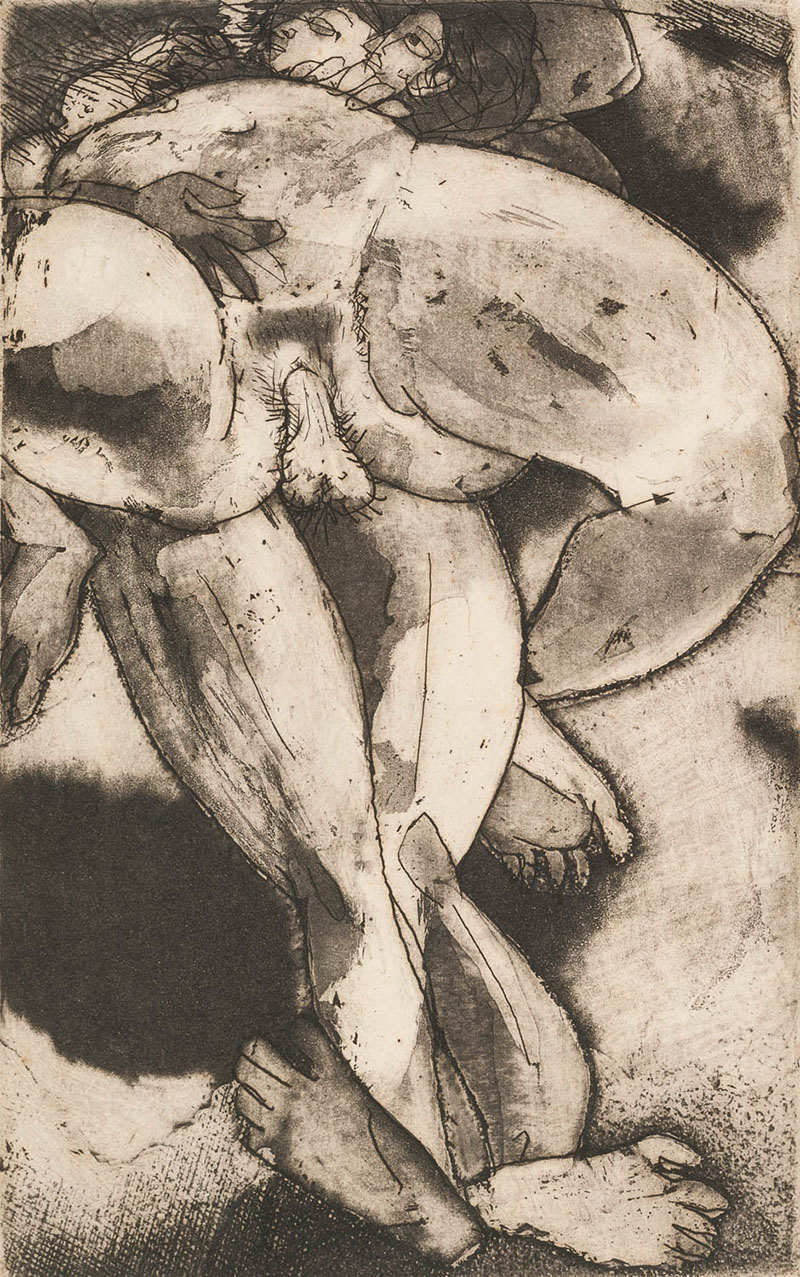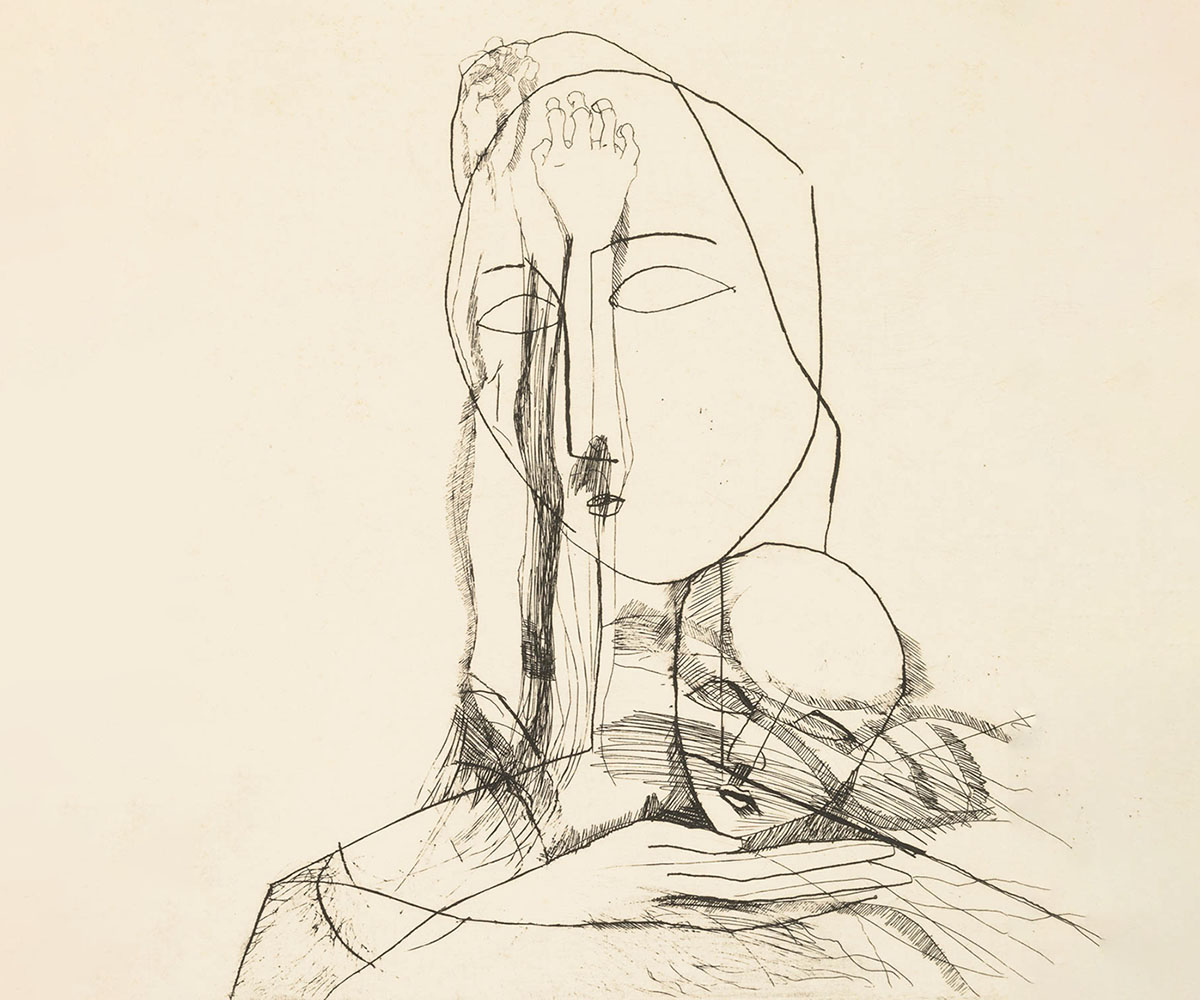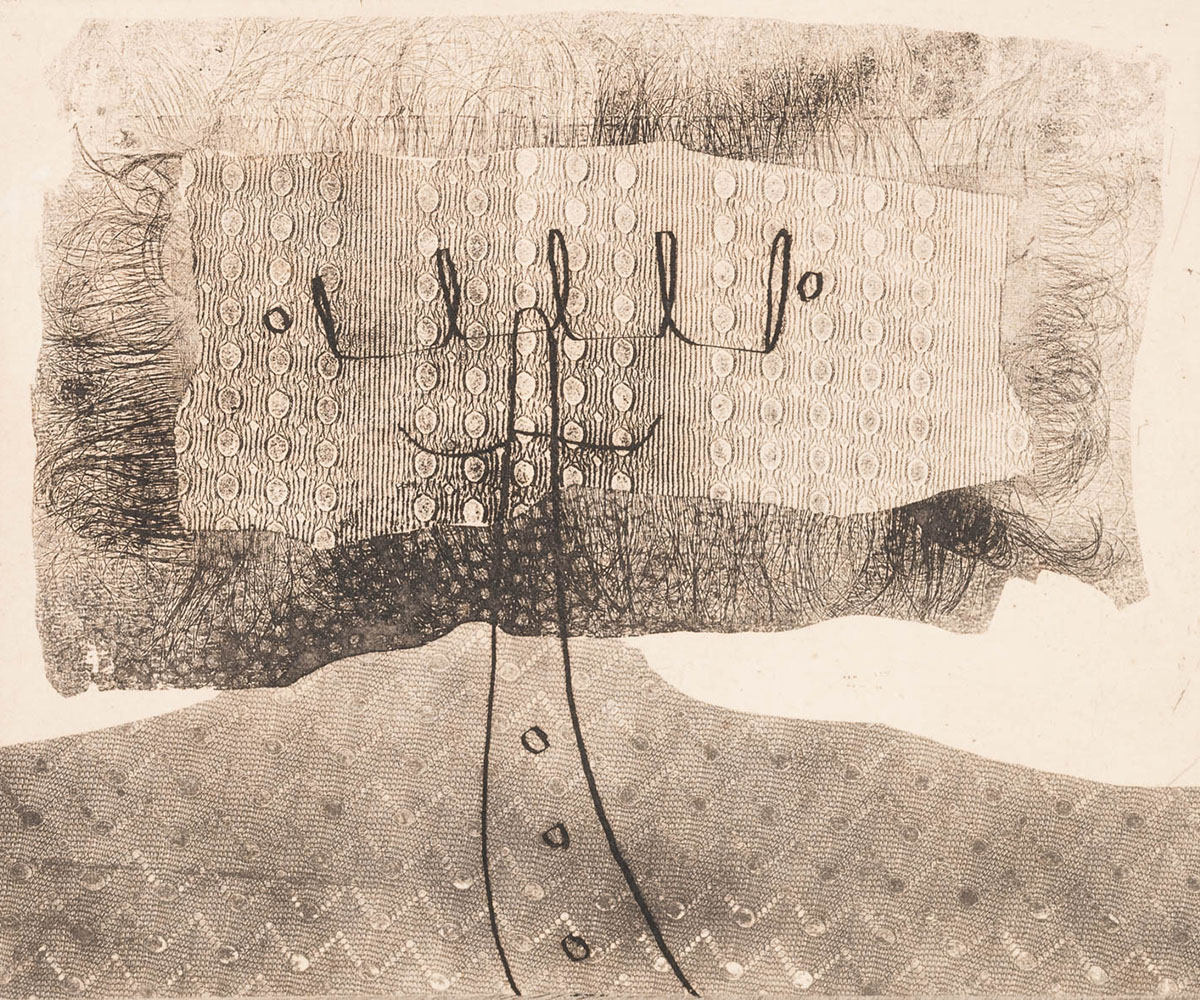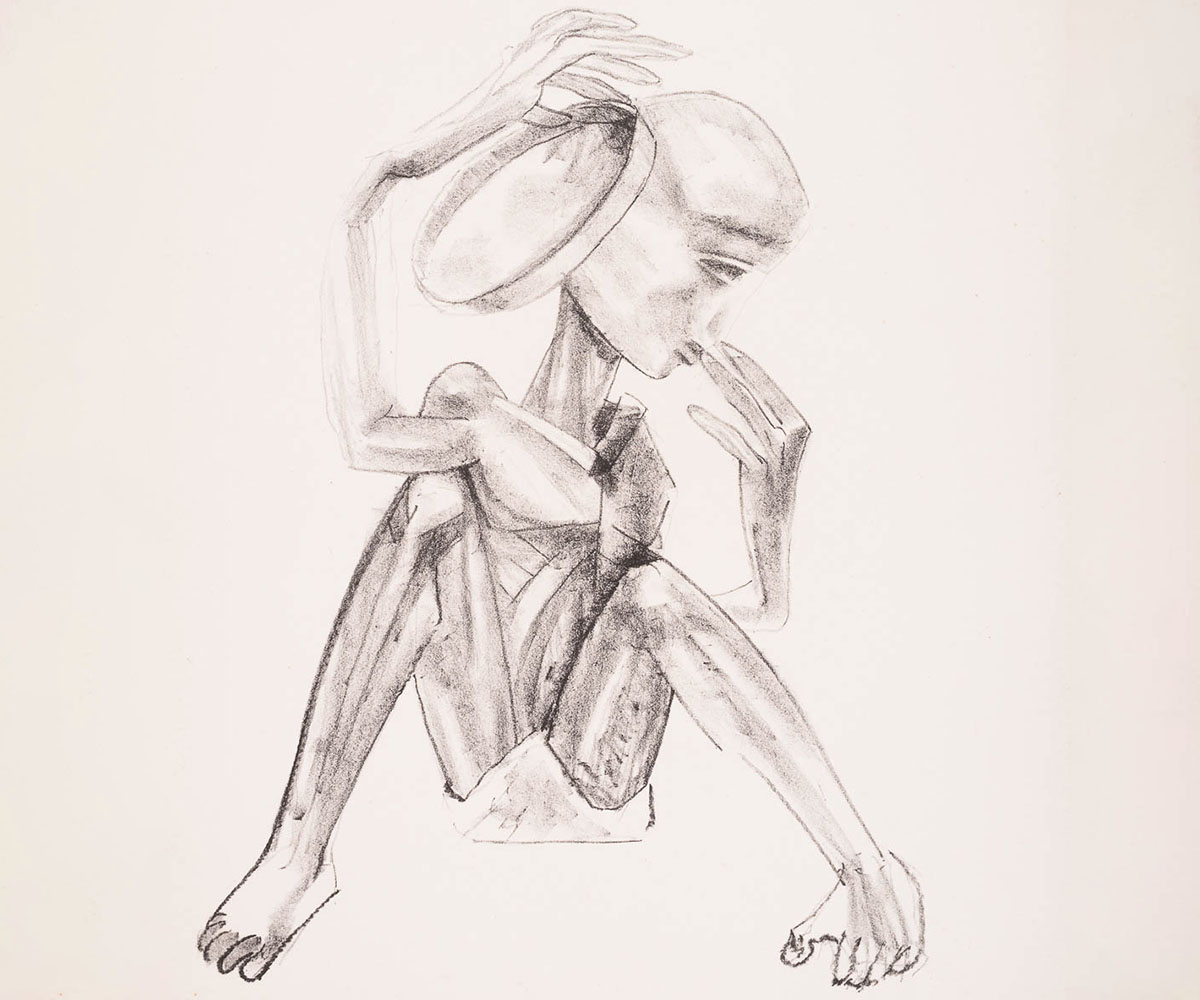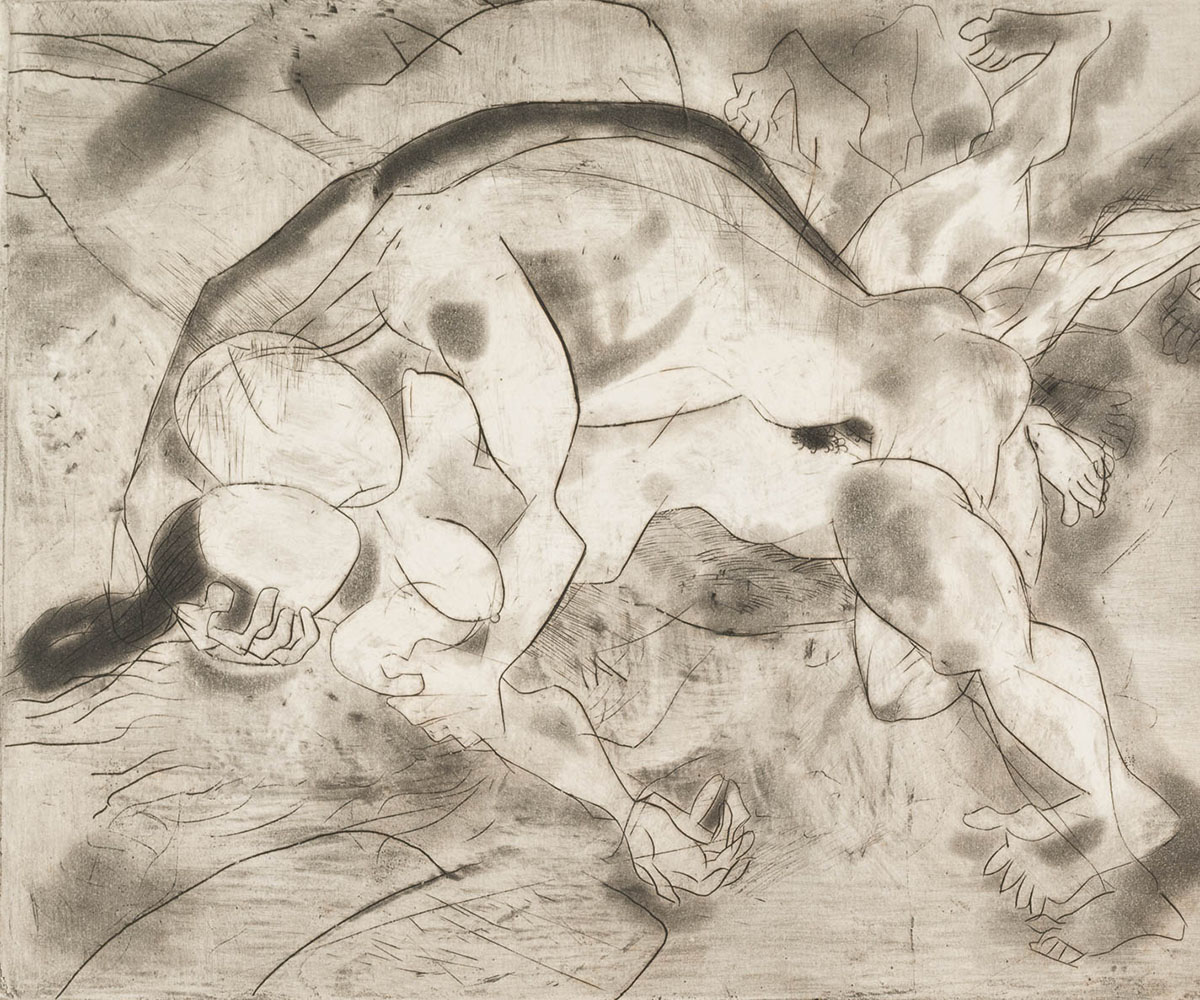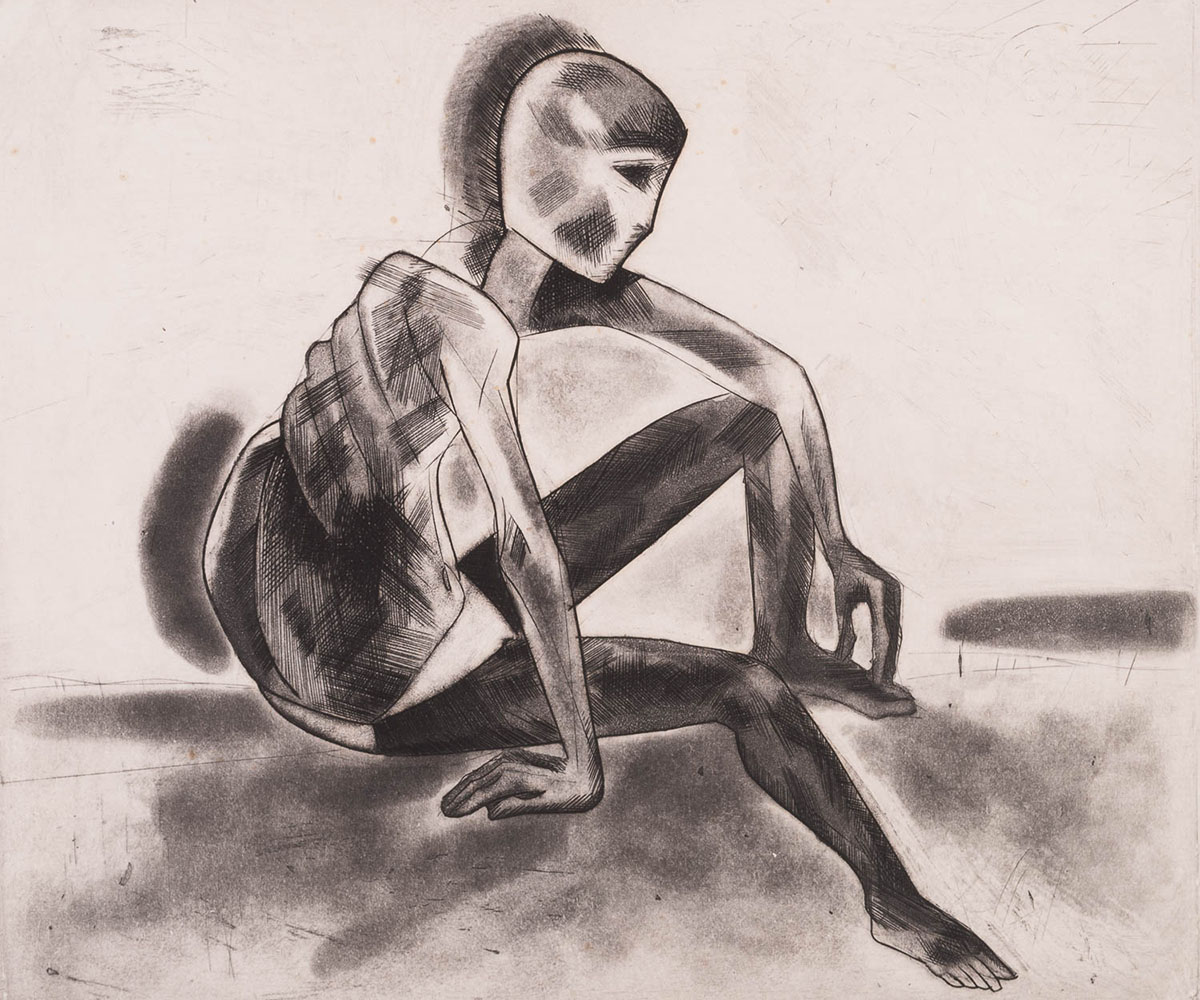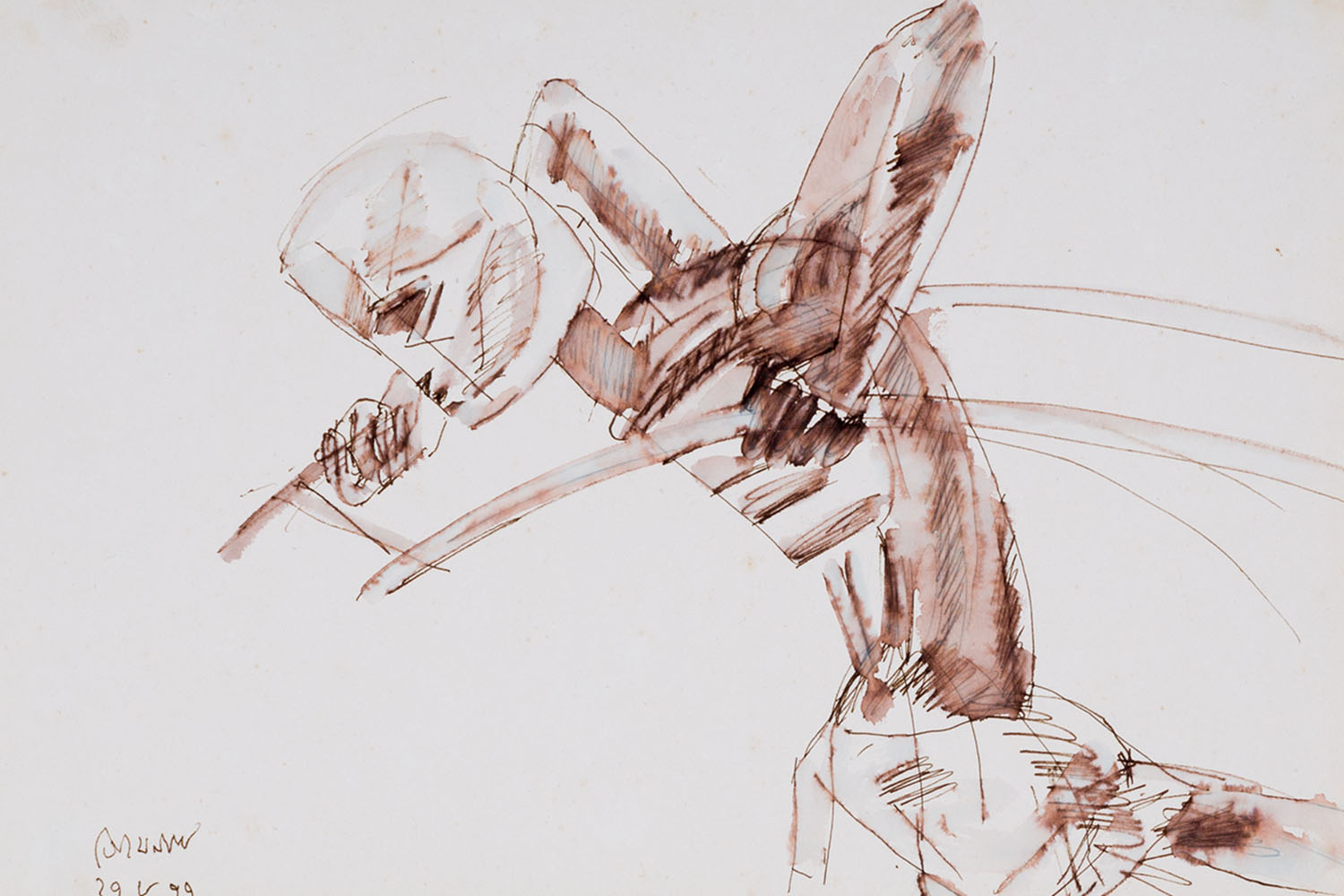ARTICLE
Somnath Hore (b. 1921; d. 2006)
With the banning of the Communist Party in the late 1940s, Hore was forced underground, and was also briefly imprisoned twice, events that interrupted his education. Returning in 1950, he began teaching and producing artwork to sustain himself financially, while experimenting with various forms of printmaking. In 1954, Hore took a teaching position at the Indian College of Arts and Draftsmanship, Calcutta, and began his experiments with intaglio with the desire to build a set of technical skills that would allow him to express his angst at the widespread suffering and sociopolitical strife around him. While initially preoccupied only with the message of his images, he now turned his attention to pictorial language and style. This led to his tentative exploration of abstraction, best typified by the untitled 1956 etching of a sitting figure. His woodcut prints and sketches from this period straddled the conflicting influences of Chinese Socialist Realism, a political art movement that focused on realistic depictions of communist utopia, and German Expressionism, which emphasised the artist’s feelings over replicating reality. By the late 1950s, Hore’s work moved from literal figuration to a more expressionist style.
Twelve years after joining, in 1957 Hore received his diploma in fine art from Government College of Art and Craft, Calcutta. Meanwhile, he had given up his Communist Party membership in 1956, with a wish to devote himself to artistic practice and disillusionment with political machinery, despite what would remain a lifelong commitment to socialism. Two years later, in 1958, having adopted printmaking as his principal medium of expression, Hore joined the art department of the Delhi Polytechnic (now College of Art, New Delhi) as faculty member and supervisor of the printmaking section. For the next ten years, he continued perfecting techniques such as lithography and etching, and carried out both technical and stylistic experiments, juxtaposing form, motif, colour, line and texture.
In 1968, he returned to West Bengal to head the graphics and printmaking department at Kala Bhavana, Shantiniketan. While there, he turned his focus back to other mediums and techniques, experimenting with paper-making and other paper-based mediums using rag-paper and papier-maché. Hore’s earlier explorations in abstraction in terms of colour planes, logography, calligraphy and texture led to a decisive shift in his practice in the early 1970s. His expertise in paper-making techniques culminated in Wounds (1970s), an innovative series of paper pulp–prints. Through these mostly monochromatic compositions, Hore revisited themes of violence and trauma, which had come to inhabit much of his artistic oeuvre. He used hot knives and rods to slash into pieces of clay, which were then used as moulds for his paper pulp. This resulted in prints with scarred, ripped, dented, torn and blistered surfaces — symbolising the wounds on human skin, and thereby the effects of violence and strife. In some cases, Hore added ink marks to create an illusion of blood.
In the 1970s, Hore also began creating bronze sculptures of tortured and skeletal human and animal figures that reflected his lifelong concern with sociopolitical depredation. The gaunt, starved and half-dead or dying figure remained the central and guiding motif of his sculptural practice until the end of his career. His preoccupation with the impacts of war transcended national borders, as evident in one of his largest works, Mother and Child (1977), created as a tribute to the victims of the Vietnam War. Created over two years, against the backdrop of the anti-war protests in which Hore himself was an active participant, the 1-metre-tall, 40-kilogram sculpture was stolen from Hore’s studio at Kala Bhavana almost immediately after its completion and never retrieved.
Hore’s work has been exhibited widely, in India and internationally. His work is in the permanent collections of the National Gallery of Modern Art, New Delhi; Lalit Kala Akademi, New Delhi; Kiran Nadar Museum of Art, New Delhi; and the Jehangir Nicholson Collection, Mumbai, among others. In 2022, Emami Art organised a centenary exhibition of Hore’s work, curated by KS Radhakrishnan.
Hore received Lalit Kala Akademi’s National Awards for painting and for graphics in 1960 and 1963 respectively, and the Lalit Kala Ratna Puraskar in 2004. In 2007, he was posthumously awarded the Padma Bhushan.
Hore died in Shantiniketan at the age of 85.
Bibliography
Appasamy, Jaya. “The Graphic Art of Somnath Hore.” Lalit Kala Contemporary, 1972. https://criticalcollective.in/SearchResult.aspx?search=somnath%20Hore.
Gallery7. “Somnath Hore.” 2019. https://www.gallery7.com/Somnath_Hore.pdf.
Hore, Somnath. “Wounds.” CIMA, 1995. https://criticalcollective.in/CC_ArchiveInner2.aspx?Aid=225&Eid=389.
Parimoo, Ratan. “Somnath Hore and His Times.” Asia Art Archive. 1995. https://cdn.aaa.org.hk/_source/digital_collection/fedora_extracted/40748.pdf.
Prinseps. “Somnath Hore: The Artivist.” Accessed November 10, 2023. https://prinseps.com/research/somnath-hore-the-artivist/.
Radhakrishnan, K. S. “Man, Artist, Wound: Somnath Hore as I Knew Him.” The Wire, April 13, 2021. Accessed November 10, 2023. https://thewire.in/the-arts/somnath-hore-the-artist-who-remained-preoccupied-with-the-concept-of-the-wound.
Singh, Devika. “Indian Art and the Bangladesh War: Somnath Hore, KG Subramanyan and Bhupen Khakhar in a Time of ‘Upheaval and Chaos’.” Third Text 31, no. 2–3 (2017): 459–76.
Siva Kumar, R. “Somnath Hore – The Artist Who Remained Preoccupied with the Concept of the Wound.” The Wire, April 3, 2022. Accessed November 10, 2023. https://thewire.in/the-arts/somnath-hore-the-artist-who-remained-preoccupied-with-the-concept-of-the-wound.
Subramaniam, Avinash. “The Story of Indian Art # 31: Somnath Hore.” Engrave, 2019. https://engrave.in/blog/indian-art-somnath-hore/.
Subramanyan, K. G. “In Honour of Somnath Hore.” Asia Art Archive, 2008. https://cdn.aaa.org.hk/_source/digital_collection/fedora_extracted/42212.pdf.
Sunderason, Sanjukta. Partisan Aesthetics: Modern Art and India’s Long Decolonization. Boston: Stanford University Press, 2020.




